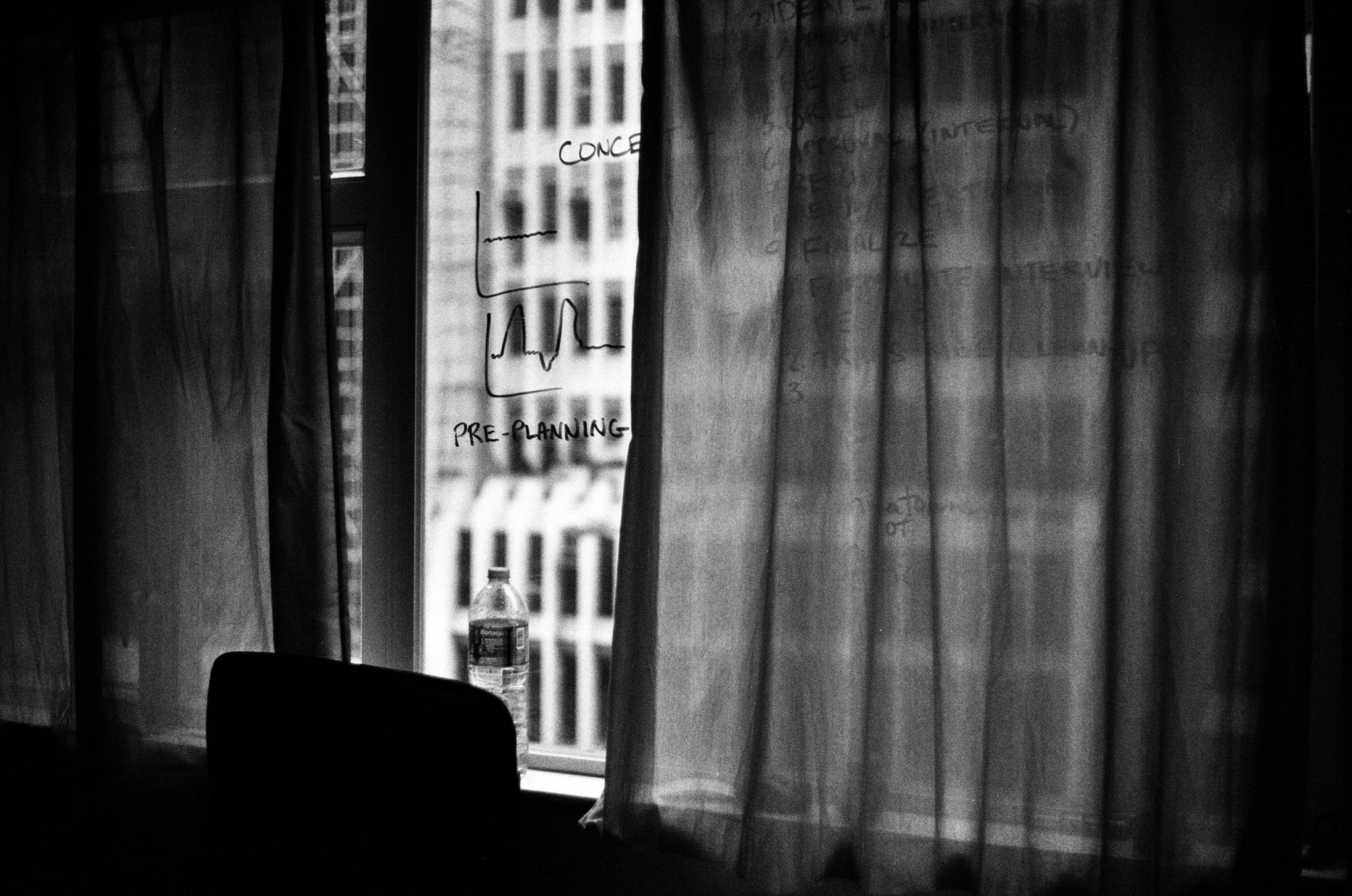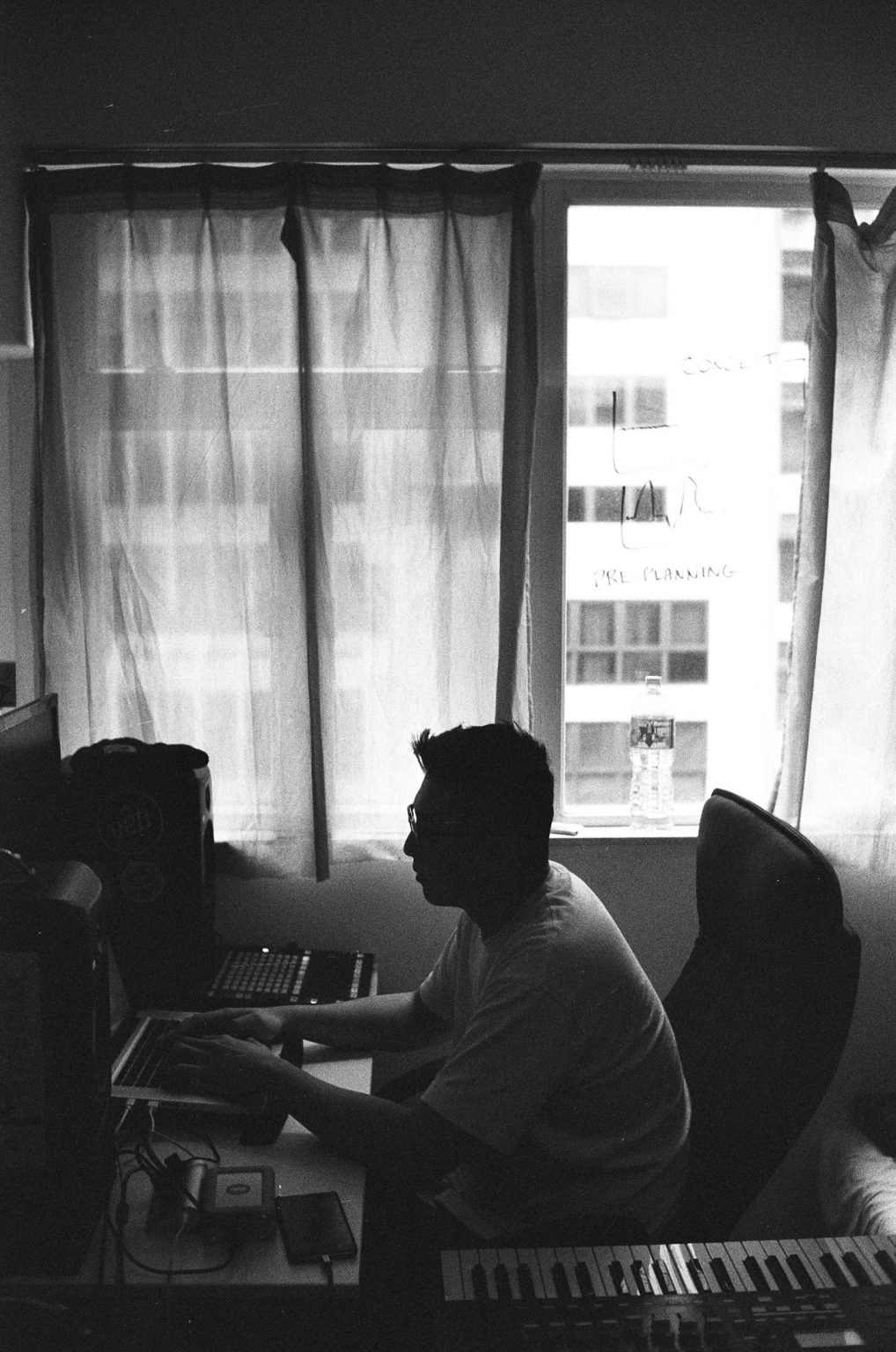
Building the Brand —
Why Audio?
Script & Narration by Nate Kan
Photos by Eugene Kan
Audio by Elphick Wo
Illustration by Siu Yan Fung
You might be curious about why you’re listening to this story as opposed to just reading it off your screen.
In the early stages of MAEKAN, a lot of consideration went into building the experience. We thought about simply sticking with text and photos and maybe experimenting with video, but in the end, we found our reasons for why audio was the best approach.

The current way in which we live our lives is constantly changing. It’s never quite stagnant, with continual movement and direction, and more importantly, it’s dictated by outside forces we currently can’t control. The advancements in storytelling are evolving at a rapid pace, and media typically gets behind tech advances such as augmented and now virtual reality. But the medium that has arguably been around the longest and one that represented our best interests was right in front of us…
The spoken word.

If it’s glass, we’ll draw on it. Sketches of us mapping out energy and speech levels when narrating.
Attention Span
It’s clear we’ve taken a firm stance against shallow content that’s devoid of any strong messages, but we’re also hyper aware of the current media landscape. We needed to know where we were headed as a culture and society if we were to build our own outpost.
We’re part of a unique online-offline generation. We knew what it was like in both a pre-digital and post-digital era and where the best games around were “Oregon Trail” or “Number Munchers.” We collectively only have a little over two decades of the Internet under our belt as a society, but we’re all too familiar with its capabilities for augmenting a user’s experience—and commanding more of their attention too.
It’s become difficult to fight the new normal of a digital lifestyle. Attention spans are continually under attack, and finding penetration through the noise has never been more challenging. People have lamented “the death of long-form content” in the digital age, but we had to challenge this: Long-form content isn’t to be romanticized, and it’s not necessarily better. But at the same time, great stories and developing a narrative can’t be told in 160 words or a YouTube-optimized two-minute, 37-second video.
“Great stories and developing a narrative can’t be told in 140 characters.”
Laying the foundation and the narrative sometimes might take a ‘big picture’ approach before you arrive at a critical takeaway. Sometimes that may take say, 15 minutes, but this was our stumbling block. Ask somebody to read this 15-minute article you found interesting, and the canned response is “I just don’t have time.”
But what about listening to something over the course of 15 minutes? Even if you’re not a regular audio listener, it soon becomes much more acceptable, and audio storytelling just might be our best bet to continue long-form storytelling.
Frictionless
Audio has a unique place in our sensory experience of the world, and it fit perfectly with our goal as a publication. We certainly wanted to hold the attention of our readers and listeners, but we didn’t want to compete for it with their lives.
I guess you could say the ultimate goal would be more HBO’s Game of Thrones, same time every week, versus Netflix, where it can consume your life as you mindlessly binge watch for hours at a time.
When we sat down to really think about it, we envisioned scenarios where people would engage with our stories: It was a mix of working out at the gym, editing photos from yesterday’s shoot, and a bit of “MAEKAN and chill” after a day at the office.

MAEKAN Audio Engineer Elphick Wo in his “home studio” in Prince Edward, Kowloon.

Our DIY setup with Cody Horne in the background.
We’re not by any means looking to create walls between human interaction. But sometimes during a busy commute, listening to a story while observing your surroundings can be therapeutic. As a low-friction medium that doesn’t require hands or eyes, audio is also easier on the mind, especially when we’re inevitably committed to another task. Video, text or images, when presented as the primary medium of input, absolutely require your vision.
This isn’t to say we didn’t want our readers to enjoy our photography, writing or videos, but we also know that our readers might not always be able to commit time or attention to looking at a screen at a given moment.
There wasn’t ever a right or wrong way to experience MAEKAN, but the visuals were there to help fill in the gaps of your own imagination after the completion of a story. That still is the beauty of audio. You start by creating your own narrative in your head.
Humanistic
Which brings me to the last and biggest reason we did this.
Audio, aside from being more practical for many of our on-the-go readers, creates a strong humanistic connection. It’s what MAEKAN wants to nurture in an increasingly tech-minded world. A lot of content today gets produced out of a desire to grow metrics or keep sponsors happy, and what’s worse is the commoditization of our emotions has reached a pinnacle: A lot of it is designed to pull at our strings mechanically and what’s meant to create that momentary visceral response offers little in terms of sustained insight or intrigue.
With our stories, we wanted to change how we interacted in a way that serves our audience, and audio storytelling was the perfect candidate. For one, having a human voice tell the story adds a very direct appeal to the emotions and the imagination in a way that text can’t.
“Before the creation of writing systems, oral storytelling served as the primary means of documentation.”
When narrators tell stories where they’ve been on location, you can better understand the impression that the experience left on them. And when our subjects speak, you can hear their nuanced expressions of disappointment, surprise, anger or joy.
“Speaking” our stories as opposed to just typing them out also represents a return to our most primitive beginnings. Before the creation of writing systems, oral storytelling served as the primary means of documentation. It allowed people to build, share, reinforce and ultimately preserve their culture, and we hope to do just that too.
We all come from many cultures around the world, but we also share some fundamental values, values that we at MAEKAN believe are worth fostering to create a very human-centered global culture and community. It’s a small camp for now, but it’s growing with time. We look forward to meeting more people around that campfire and the stories they might have for us too.




























